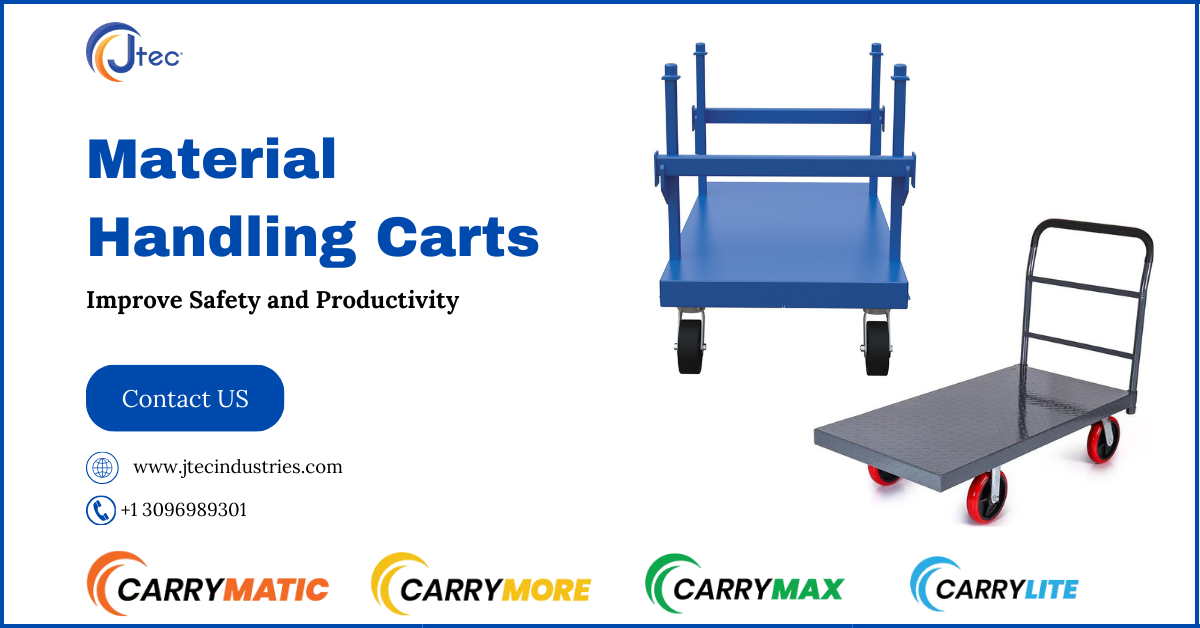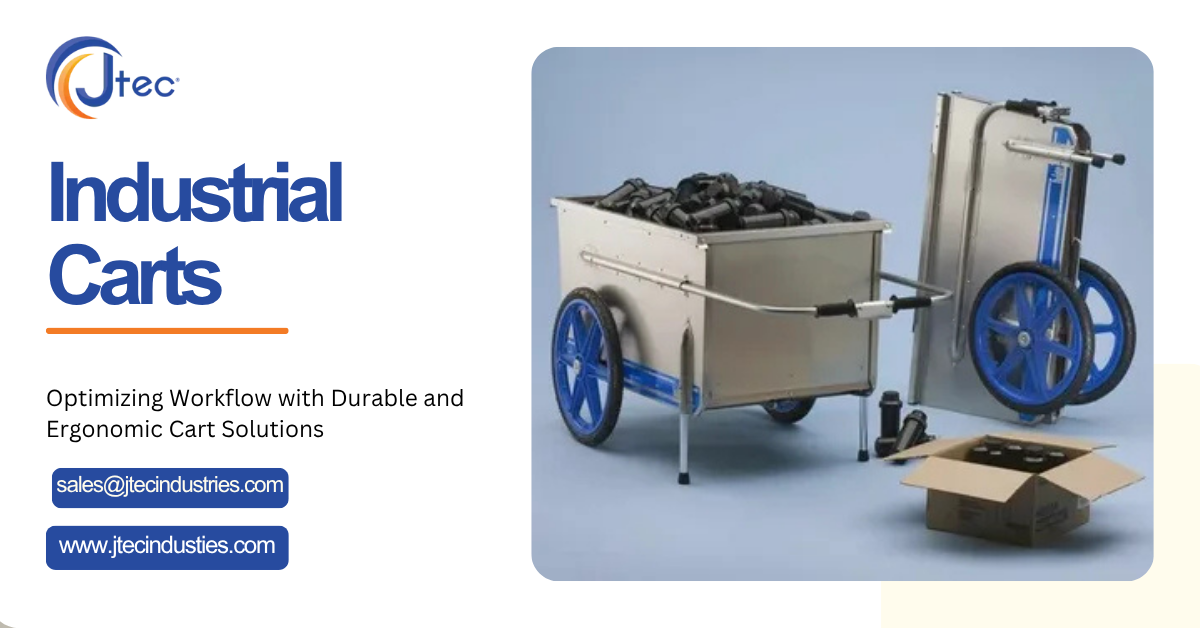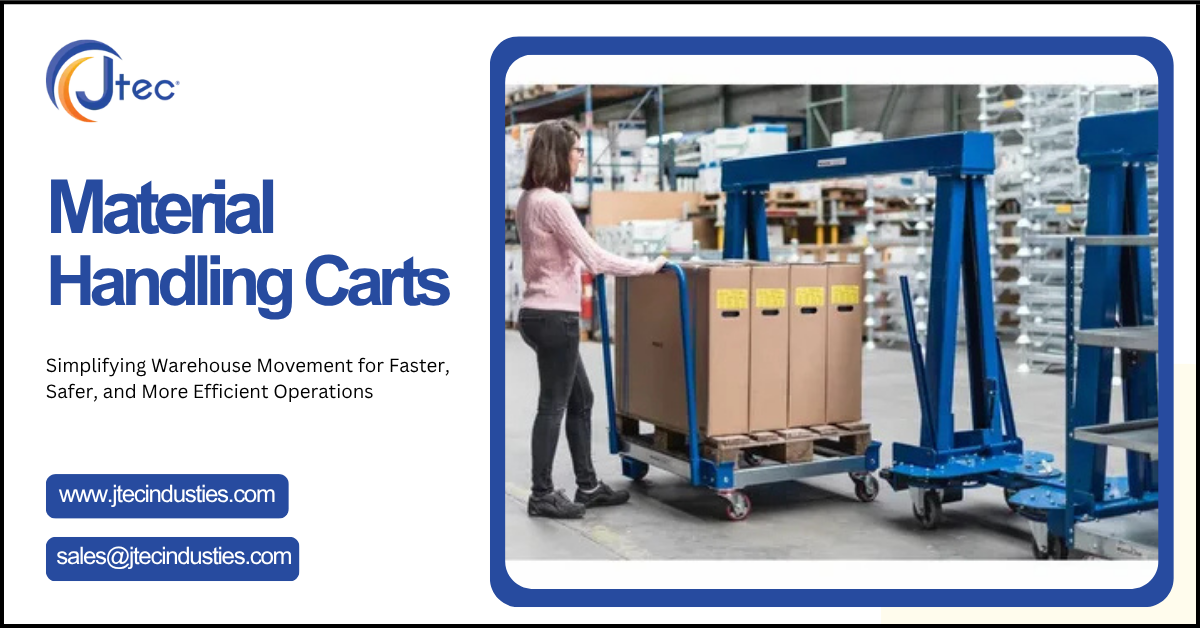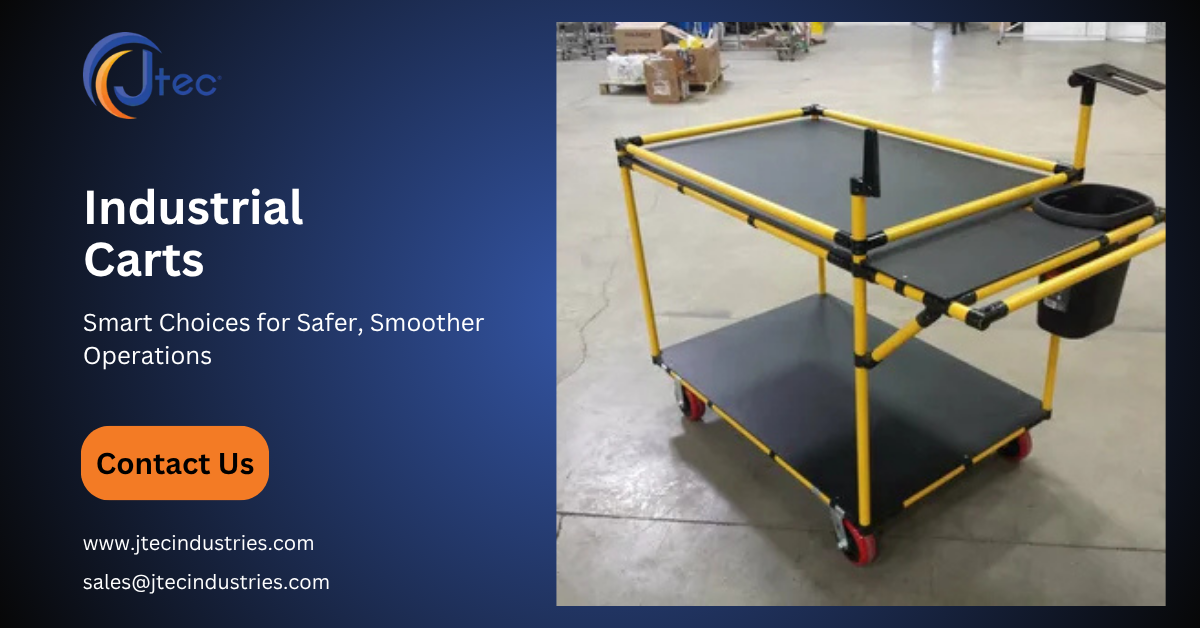How Material Handling Carts Improve Workplace Safety and Productivity

Maintaining safety while improving productivity is essential for businesses in today's fast-paced industrial environment. One effective solution that plays a crucial role in achieving these goals is material handling carts. These versatile tools facilitate the movement of goods, reduce manual labor, and ultimately contribute to a safer and more efficient workplace. In this blog, we will explore how material handling carts improve workplace safety and productivity, providing insights that can benefit businesses across various sectors.
Understanding Material Handling
Material handling encompasses all activities related to the movement, protection, storage, and control of materials and products throughout the manufacturing, warehousing, distribution, and consumption processes. Proper material handling is essential for several reasons:
- Efficiency: Streamlining the movement of materials minimizes downtime and boosts overall productivity.
- Safety: Reducing manual handling lowers the risk of workplace injuries.
- Cost-Effectiveness: Efficient processes lead to lower operational costs and increased profitability.
Benefits of Material Handling Carts
1. Improved Workplace Safety
One of the most significant advantages of using these carts is their contribution to workplace safety. Here is how they help:
- Reduced Risk of Injuries: Carts are designed to transport heavy loads, allowing workers to avoid manual lifting, which is a leading cause of workplace injuries. Businesses can protect their employees from musculoskeletal disorders, sprains, and strains.
- Stability and Balance: Many industrial carts come equipped with features such as sturdy construction, brakes, and low centers of gravity, ensuring stability during transport. This design minimizes the risk of tipping, allowing workers to transport goods confidently.
- Organized Workspaces: Using carts promotes organization in the workplace. They help keep areas tidy and free from clutter, reducing trip hazards and creating clear pathways. A well-organized workspace is crucial for preventing accidents and enhancing overall safety.
2. Increased Productivity
Material handling carts can significantly boost productivity in various ways:
- Streamlined Operations: Carts enable faster transport of materials, allowing employees to complete tasks more quickly. Instead of making multiple trips or struggling to carry heavy items, workers can move goods efficiently, reducing downtime and maintaining a steady workflow.
- Improved Load Capacity: Modern material handling carts are designed with larger load capacities, allowing workers to transport more materials in a single trip. This capability saves time and reduces the physical demands placed on employees.
- Ergonomic Design: Many contemporary carts are engineered with ergonomics in mind. Features such as adjustable handles and user-friendly designs reduce the effort required to move materials, minimizing fatigue and enabling employees to focus on their tasks without the distraction of discomfort.
3. Versatility and Customization
These carts come in various designs and configurations, making them suitable for a wide range of applications:
- Custom Configurations: Businesses can choose or customize carts to fit their specific material handling needs. From multi-shelf carts for warehousing to specialized carts for assembly lines, the adaptability of these tools ensures that they can meet unique operational requirements.
- Adaptability to Different Environments: Industrial carts can be used in various environments, including warehouses, factories, retail spaces, and healthcare facilities. Different models are designed to perform effectively on various surfaces, accommodating indoor and outdoor settings.
- Integration with Technology: Many modern material handling carts can be equipped with technology such as RFID tracking, which improves inventory management and tracking. This integration allows businesses to keep better tabs on materials and streamline operations further.
4. Cost-Effectiveness
Investing in quality material handling carts can lead to substantial cost savings:
- Reduced Labor Costs: By minimizing the need for manual labor in transporting materials, businesses can allocate their workforce more efficiently. With carts, fewer employees may be needed for material transport, freeing them to focus on more value-added tasks.
- Lower Injury-Related Costs: A decrease in workplace injuries leads to reduced insurance premiums, fewer compensation claims, and a decrease in lost workdays. Over time, these savings can significantly impact a company’s bottom line.
- Durability and Longevity: Quality carts are built to last. Investing in durable these carts reduces the need for frequent replacements and repairs, enhancing the return on investment. Companies can save money in the long run by choosing reliable, high-quality products.
Selecting the Right Material Handling Cart
To maximize the benefits of material handling carts, businesses must select the right type for their needs. Here are some key factors to consider:
1. Weight Capacity
Determine the weight of the materials you intend to transport and ensure the cart can handle it. Overloading a cart can lead to accidents, damage to the cart, and injuries.
2. Wheel Type
The type of wheels is crucial, depending on the surfaces the carts will be used on. Heavy-duty rubber wheels are ideal for rough terrains, while smaller, swivel wheels are better suited for smooth, indoor surfaces. Choosing the right wheel type can enhance maneuverability and reduce the effort required to move the cart.
3. Size and Maneuverability
Consider the dimensions of the cart in your workspace. A cart that is too large may be difficult to navigate in tight areas, while one that is too small may not be able to carry sufficient materials. A balance between size and maneuverability is essential for optimal efficiency.
4. Material and Build Quality
Select carts made from durable materials that can withstand the demands of your environment. Steel or aluminum carts offer strength and longevity, while plastic carts can be lighter and resistant to corrosion. The choice of materials affects the cart's durability and suitability for specific tasks.
Conclusion
Material handling carts are valuable tools that improve both safety and productivity in the workplace. These carts are essential in modern industrial settings because they reduce the risk of injuries, streamline operations, and provide cost-effective solutions to material transport. By prioritizing safety and productivity through the use of these carts, companies can ensure a healthier workforce and a more efficient operation. Evaluate your current material handling processes and consider how implementing the right carts can transform your workplace for the better.
Note: IndiBlogHub features both user-submitted and editorial content. We do not verify third-party contributions. Read our Disclaimer and Privacy Policyfor details.







